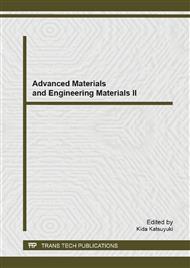p.120
p.124
p.128
p.133
p.137
p.141
p.145
p.150
p.154
Mechanical and Biological Characteristics of Electrospun PCL Meshes – the Influence of Solvent Type and Concentration
Abstract:
Non-woven scaffolds, with fiber dimensions at a nanometer scale, can mimic the physical structure of natural extracellular matrices, being ideal construts for Tissue Engineering applications. This research work explores solution electrospinning to produce nanoscale meshes. Different Poly (ε-caprolactone) (PCL) solutions were considered and the influence of both polymer concentration and type of solvent studied regarding the fabrication of polymeric meshes and their mechanical and biological properties. PCL solutions were prepared using two different solvents: glacial acetic acid with triethylamine (AA/TEA)) and Acetone (DMK) at different concentrations. PCL/AA/TEA meshes present better mechanical properties and good cell viability and proliferation.
Info:
Periodical:
Pages:
137-140
Citation:
Online since:
April 2013
Authors:
Keywords:
Price:
Сopyright:
© 2013 Trans Tech Publications Ltd. All Rights Reserved
Share:
Citation:


